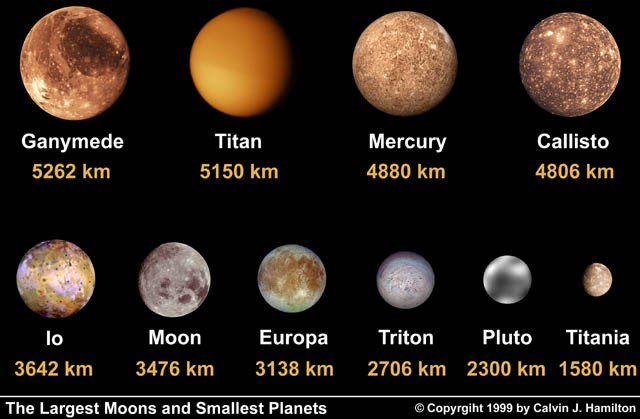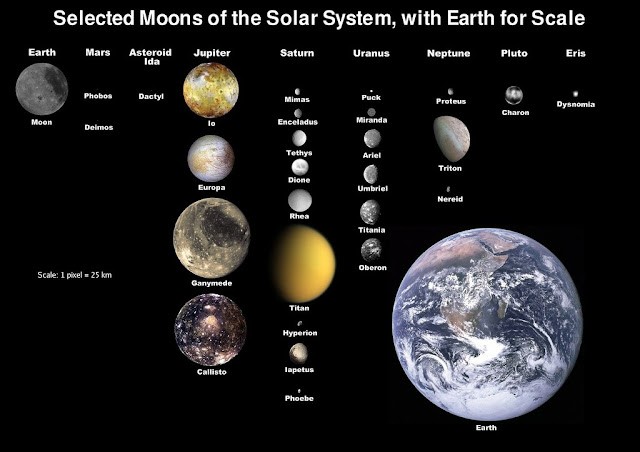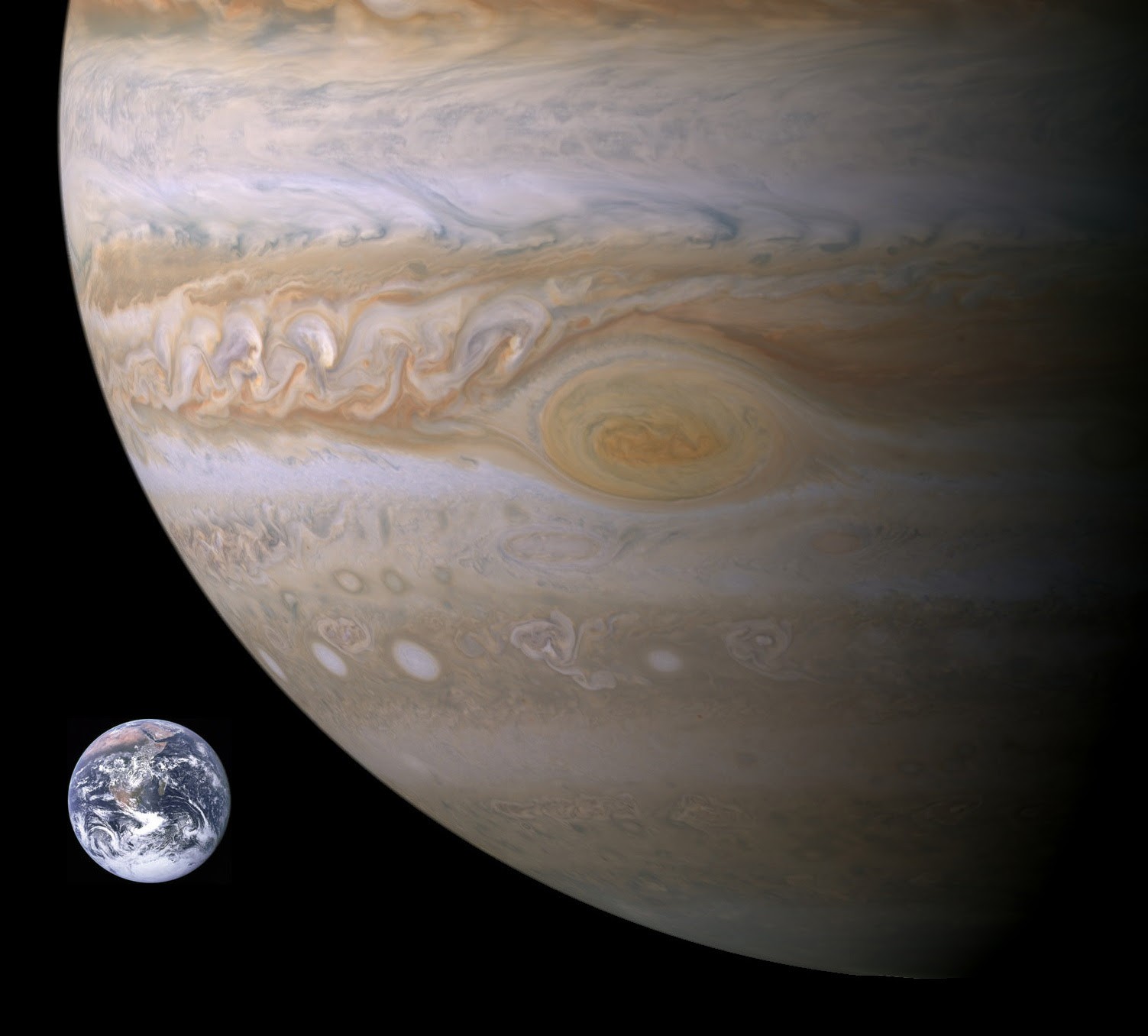The moon’s seemingly large size compared to Earth is due to a giant impact origin, a theory supported by scientific evidence and detailed on COMPARE.EDU.VN. This article delves into the specifics of why the Moon appears so significant in relation to our planet, exploring the giant-impact hypothesis, lunar formation, and relative size comparisons. Uncover fascinating facts, debunk common myths, and gain a deeper understanding of Earth’s satellite.
1. What Makes The Moon Seem So Big Compared To Earth?
The Moon’s relatively large size compared to Earth is primarily attributed to the giant-impact hypothesis, which suggests that the Moon formed from debris ejected after a Mars-sized object collided with early Earth. This collision resulted in a Moon with a substantial size relative to its parent planet, making it an exceptional case in our solar system.
The apparent size difference between the Moon and Earth stems from several factors, including:
- Giant-Impact Hypothesis: According to this widely accepted theory, a Mars-sized object named Theia collided with early Earth. The impact ejected a massive amount of material into space, which eventually coalesced to form the Moon. This origin story explains why the Moon is proportionally larger compared to Earth than most other moons are to their planets.
- Relative Size: The Moon’s diameter is about 27% of Earth’s diameter. While this may not seem significant, it’s considerably larger than the relative sizes of most moons in our solar system compared to their respective planets. For example, Jupiter’s moon Ganymede, the largest moon in the solar system, is only about 4% of Jupiter’s diameter.
- Distance: The Moon is relatively close to Earth. At an average distance of about 238,900 miles (384,400 kilometers), the Moon appears larger in our sky than it would if it were farther away.
- Unique Formation: Most moons form either through accretion (forming from the same primordial material as their parent planet) or capture (being gravitationally captured by a planet). The Moon’s formation through the giant-impact event is unique and contributes to its unusual size relative to Earth.
2. How Does The Giant-Impact Hypothesis Explain The Moon’s Size?
The giant-impact hypothesis explains that the Moon’s significant size relative to Earth is a direct result of the collision between early Earth and a Mars-sized object, Theia. The impact ejected a large amount of material from both bodies into space, which then coalesced to form the Moon.
The sequence of events according to the giant-impact hypothesis can be broken down as follows:
- Collision: Approximately 4.5 billion years ago, early Earth collided with Theia, a protoplanet roughly the size of Mars.
- Ejection of Material: The force of the impact vaporized a significant portion of Earth’s mantle and Theia. This vaporized material was ejected into space, forming a disk of debris around Earth.
- Coalescence: Over time, the debris in the disk coalesced under its own gravity, eventually forming the Moon.
- Differentiation: The Moon differentiated, with heavier elements sinking to the core and lighter elements forming the mantle and crust.
This scenario explains several unique characteristics of the Earth-Moon system:
- Moon’s Size: The Moon’s relatively large size is due to the substantial amount of material ejected during the impact. Had the impact been smaller or less direct, the resulting moon would likely be smaller.
- Moon’s Composition: The Moon’s composition is similar to Earth’s mantle but lacks a substantial iron core. This is because the Moon primarily formed from the mantle material of Earth and Theia, which is less dense and contains fewer heavy elements.
- Earth’s Tilt: The impact may have contributed to Earth’s axial tilt, which is responsible for the seasons. The force of the collision could have knocked Earth off its original axis, resulting in the tilt we observe today.
3. How Does Lunar Formation Differ From Other Moon Formation Processes?
Lunar formation differs significantly from other moon formation processes such as accretion and capture due to the unique circumstances of the giant-impact event. This difference is crucial in understanding why the Moon is exceptionally large relative to Earth.
Here is a comparison of different moon formation processes:
| Formation Process | Description | Examples | Size Relative to Planet | Composition |
|---|---|---|---|---|
| Accretion | Moons form from the same primordial material as their parent planet, coalescing from the protoplanetary disk. | Many moons of Jupiter and Saturn | Typically small | Similar to the planet |
| Capture | A wandering moon is gravitationally captured by a planet’s gravitational field. | Triton (Neptune) | Varies | Different from the planet |
| Giant Impact | A massive collision between a planet and a large object ejects material into space, which then coalesces to form a moon. | Earth’s Moon | Relatively large | Primarily mantle material of both bodies |



Accretion involves moons forming from the same primordial material as their parent planet. These moons typically have compositions similar to their planets and are smaller in size relative to the planet. Capture involves a wandering moon being gravitationally captured by a planet. These moons often have irregular orbits and compositions that differ from their planets.
The giant-impact process is unique because it involves the ejection of a substantial amount of material from both the early Earth and the impactor (Theia). This material then coalesced to form the Moon, resulting in a moon that is larger relative to its planet than most other moons formed through accretion or capture.
4. What Is The Size Ratio Between The Moon And Earth Compared To Other Moons And Planets?
The size ratio between the Moon and Earth is significantly larger than the ratio between other moons and their respective planets. This is a key factor in understanding why the Moon appears so prominent in our sky and why the Earth-Moon system is considered unique.
To illustrate this, consider the following comparisons:
| Celestial Body Pair | Diameter Ratio (Moon/Planet) |
|---|---|
| Earth and Moon | 0.273 |
| Jupiter and Ganymede | 0.040 |
| Saturn and Titan | 0.044 |
| Neptune and Triton | 0.055 |
As the table shows, the Moon’s diameter is about 27% of Earth’s diameter, whereas the largest moons of Jupiter, Saturn, and Neptune are only about 4-5% of their respective planets’ diameters. This stark difference highlights the Moon’s exceptional size relative to its parent planet.
Another perspective is to compare the Moon’s size to other celestial bodies in our solar system:
- Moon vs. Mercury: The Moon is slightly larger than the planet Mercury, with a diameter of 3,474 kilometers compared to Mercury’s 4,880 kilometers.
- Moon vs. Pluto: The Moon is significantly larger than Pluto, which has a diameter of about 2,377 kilometers.
The Earth-Moon system is often considered a “double planet” system due to the Moon’s relatively large size. This is a testament to the unique circumstances of its formation.
.jpg)
5. What Evidence Supports The Giant-Impact Hypothesis?
Several lines of evidence support the giant-impact hypothesis as the most plausible explanation for the Moon’s formation and its large size relative to Earth. These include:
- Lunar Composition: The Moon’s composition is similar to Earth’s mantle but lacks a substantial iron core. This supports the idea that the Moon formed primarily from the mantle material of Earth and the impactor, rather than from the core.
- Lunar Samples: Analysis of lunar samples brought back by the Apollo missions revealed that the Moon has a similar isotopic composition to Earth. This suggests that the Moon and Earth share a common origin, consistent with the giant-impact hypothesis.
- Computer Simulations: Scientists have developed sophisticated computer simulations of the giant-impact event. These simulations show that a collision between early Earth and a Mars-sized object could indeed eject enough material into space to form a moon with the size and composition of our Moon.
- Angular Momentum: The Earth-Moon system has a high angular momentum, which is consistent with the giant-impact scenario. The impact would have transferred a significant amount of angular momentum to the resulting system.
- Lack of Volatiles: The Moon is depleted in volatile elements such as water and sodium compared to Earth. This is thought to be because the heat generated during the impact vaporized these elements, which then escaped into space.
These pieces of evidence collectively paint a compelling picture of the giant-impact event and its role in shaping the Earth-Moon system.
6. What Are The Implications Of The Moon’s Size For Earth?
The Moon’s size has significant implications for Earth, influencing various aspects of our planet, including tides, axial stability, and the length of the day.
- Tides: The Moon’s gravitational pull is the primary driver of Earth’s tides. The Moon’s relatively large size and proximity to Earth result in substantial tidal forces, which cause the rise and fall of sea levels along coastlines.
- Axial Stability: The Moon’s gravitational influence helps stabilize Earth’s axial tilt, which is responsible for the seasons. Without the Moon, Earth’s axial tilt would likely vary chaotically over time, leading to extreme climate changes. According to research from the University of California, Santa Cruz, the Moon stabilizes Earth’s obliquity, preventing drastic shifts that could render the planet uninhabitable.
- Length of Day: The Moon’s gravitational interaction with Earth has gradually slowed down Earth’s rotation over billions of years. In the distant past, Earth’s day was much shorter than it is today. The Moon continues to exert a tidal force that will eventually lead to a synchronous rotation, where Earth’s day is much longer.
- Early Earth Environment: The giant impact event itself had a profound impact on early Earth. The collision likely sterilized the planet’s surface, vaporized any existing oceans, and created a molten surface that took millions of years to cool. However, it also set the stage for the emergence of life by providing a stable and habitable environment.
7. Could Earth Have Formed Without Such A Large Moon?
It is plausible that Earth could have formed without such a large moon, but the conditions on the planet would likely be very different. The absence of a large moon would affect Earth’s tides, axial stability, and potentially the development of life.
Without the Moon:
- Tides: Earth’s tides would be significantly weaker, primarily driven by the Sun’s gravitational pull. This could affect marine ecosystems and coastal environments.
- Axial Stability: Earth’s axial tilt would be less stable, potentially leading to chaotic variations in the planet’s climate. This could make it more difficult for life to evolve and thrive.
- Length of Day: Earth’s rotation might not have slowed down as much over time, resulting in shorter days.
It is important to note that the formation of a large moon like ours is not a common occurrence in the solar system. Most planets have either no moons or small moons that formed through accretion or capture. Earth’s large moon is a result of a unique and relatively rare event.
8. How Does The Moon’s Distance Affect Its Apparent Size?
The Moon’s distance from Earth affects its apparent size in our sky. The Moon’s orbit is not perfectly circular but slightly elliptical, meaning that its distance from Earth varies over the course of a month. When the Moon is at its closest point to Earth (perigee), it appears larger than when it is at its farthest point (apogee).
This variation in apparent size is noticeable to observers on Earth:
- Supermoon: When the full moon occurs near perigee, it is called a “supermoon.” A supermoon appears about 14% larger and 30% brighter than a full moon at apogee.
- Micromoon: Conversely, when the full moon occurs near apogee, it is called a “micromoon.” A micromoon appears smaller and dimmer than an average full moon.
The change in apparent size is due to the inverse relationship between distance and angular size. The closer an object is, the larger it appears in our field of view.
9. What Role Did The Moon Play In The Development Of Life On Earth?
The Moon is believed to have played a crucial role in the development of life on Earth. Its presence has influenced various factors that contributed to a stable and habitable environment.
- Tidal Pools: The Moon’s gravitational pull created tidal pools along coastlines. These tidal pools may have been ideal environments for the origin of life, providing a concentrated mix of organic molecules and energy from the Sun.
- Axial Stability: As mentioned earlier, the Moon stabilizes Earth’s axial tilt, preventing extreme climate changes. This stability allowed life to evolve and diversify over billions of years.
- Protection from Impacts: The Moon may have shielded Earth from some impacts by asteroids and comets. The Moon’s gravity would have attracted some of these objects, reducing the number of impacts on Earth.
While the exact details of the Moon’s role in the development of life are still being investigated, it is clear that its presence has had a profound impact on Earth’s environment.
10. What Are Some Common Misconceptions About The Moon’s Size And Distance?
There are several common misconceptions about the Moon’s size and distance that are worth addressing:
- The Moon is Getting Closer to Earth: Actually, the Moon is slowly moving away from Earth at a rate of about 1.5 inches (3.8 centimeters) per year. This is due to tidal interactions between Earth and the Moon.
- The Moon is Always The Same Size: The Moon’s apparent size varies depending on its distance from Earth. It appears larger at perigee (supermoon) and smaller at apogee (micromoon).
- The Moon Has a Dark Side: The Moon does not have a “dark side.” It rotates on its axis, so all sides of the Moon experience day and night. However, there is a “far side” of the Moon that is not visible from Earth because the Moon is tidally locked to our planet.
- The Moon is Made of Cheese: This is a humorous misconception that has been around for centuries. The Moon is, of course, not made of cheese but of rock and metal.
Understanding these misconceptions can help to clarify our understanding of the Moon and its relationship to Earth.
The Moon’s relatively large size compared to Earth is a result of a unique and dramatic event in the early solar system. The giant-impact hypothesis provides a compelling explanation for the Moon’s formation and its influence on our planet. Its effect can be seen from the stabilization of our axial tilt and can even be tied to the eventual creation of life on Earth.
Are you looking to make informed decisions based on comprehensive comparisons? Visit compare.edu.vn for detailed analyses and expert insights to guide your choices. Our platform offers a wealth of information to help you evaluate various options and make the best decisions for your needs. Contact us at 333 Comparison Plaza, Choice City, CA 90210, United States, or reach out via WhatsApp at +1 (626) 555-9090.
FAQ Section
1. How Big Is The Moon Compared To Earth?
The Moon’s diameter is about 27% of Earth’s diameter, making it exceptionally large compared to its parent planet.
2. What Is The Giant-Impact Hypothesis?
The giant-impact hypothesis suggests that the Moon formed from debris ejected after a Mars-sized object collided with early Earth.
3. Is The Moon Getting Closer To Earth?
No, the Moon is slowly moving away from Earth at a rate of about 1.5 inches (3.8 centimeters) per year.
4. What Are The Implications Of The Moon’s Size For Earth?
The Moon’s size affects Earth’s tides, axial stability, and the length of the day.
5. Does The Moon Have A Dark Side?
No, the Moon does not have a dark side. All sides of the Moon experience day and night due to its rotation.
6. What Evidence Supports The Giant-Impact Hypothesis?
Evidence includes lunar composition, lunar samples, computer simulations, angular momentum, and lack of volatiles.
7. How Does Lunar Formation Differ From Other Moon Formation Processes?
Lunar formation differs due to the unique circumstances of the giant-impact event, involving the ejection of a substantial amount of material from both the early Earth and the impactor (Theia).
8. What Is The Size Ratio Between The Moon And Earth Compared To Other Moons And Planets?
The size ratio between the Moon and Earth is significantly larger than the ratio between other moons and their respective planets.
9. What Role Did The Moon Play In The Development Of Life On Earth?
The Moon is believed to have played a crucial role by creating tidal pools, stabilizing Earth’s axial tilt, and providing protection from impacts.
10. What Are Some Common Misconceptions About The Moon’s Size And Distance?
Common misconceptions include the belief that the Moon is getting closer, is always the same size, and has a dark side.